Products Resources
Products
FT-IR spectrometer
The IRAffinity-1 FT-IR spectrometer from Shimadzu Scientific Instruments is designed for high-precision IR analysis to confirm, identify, and detect foreign matter in various application areas. According to the company, the instrument features long-term stability, protection from humidity, increased reliability, and analysis-support programs.
Shimadzu Scientific Instruments, Inc., Columbia, MD;
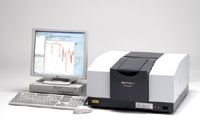
Raman microscope
Renishaw's inVia Raman microscope can be used for nondestructive testing of sperm DNA for assessing the healthiness of sperm cells. The instrument can be customized to integrate optical tweezing, which enables researchers to immobilize sperm cells with a tightly focused laser beam. The resulting Raman spectra contain information about the vibrations of molecules within the sperm cells and can be used to assess the state of its DNA.
Renishaw, Hoffman Estates, IL;

ICP application note
An application note from Teledyne Leeman Labs discusses the analysis of edible oils using the company's Prodigy High Dispersion ICP system. The note demonstrates the instrument's ability to determine trace elements in the oils. According to the publication, the instrument provides high sensitivity and dispersion for accurate and reliable results.
Teledyne Leeman Labs, Hudson, NH;
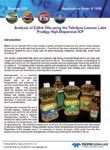
NIR minispectrometer
Hamamatsu's TG long-wavelength type near-infrared minispectrometer is a polychromator integrated with optical elements and an image sensor. Light to be measured is guided into the instrument's entrance port via an optical fiber, and the spectrum is measured with the built-in image sensor and output from a USB port to a PC for data acquisition. According to the company, the instrument's sensitivity extends to wavelengths as long as 2.55 μm.
Hamamatsu Corporation, Bridgewater, NJ;
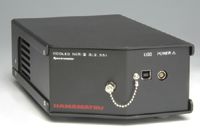
ICP–OES application note
An application note from Thermo Fisher Scientific details the use of the company's iCAP 6200 ICP spectrometer for the analysis of toxic trace elements in children's toys. The note assesses the instrument's performance for the routine analysis of toy samples for consumer safety verification. It also discusses the analysis of three samples extracted from a toy car and a baby rattle, each prepared in accordance with ASTM F963-08 and EN71 Part 3.
Thermo Fisher Scientific, Waltham, MA;
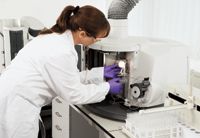
UV–vis–NIR spectrometer
The model LF-500 fiber-optic input UV–vis–NIR spectrometer from Spectral Evolution has a wavelength range of 320–1100 nm. According to the company, the fiber input provides a variety of sample-interfacing configurations and the optical system matched fiber optics provides an optimal signal-to-noise ratio. Other features include on-board calibration, storage, shutter–dark scan, and automatic exposure. Applications include water–moisture, refining, petrochemical, food, and polymers.
Spectral Evolution, North Andover, MA;

Mercury analyzer
The model RA-3000 Gold+AFS mercury analyzer from Nippon Instruments is designed for EPA Method 1631E. According to the company, the analyzer simplifies low- to sub-parts-per-million mercury analysis and reduces reagent consumption and wastes.
Nippon Instruments North America, College Station, TX;
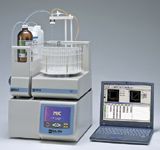
Si-PIN detector
Moxtek's XPIN detector platform and MXDPP-200 digital pulse processor can be combined with an X-ray source to assemble an X-ray fluorescence workstation. The detector reportedly has a 625-μm-thick Si-PIN diode, an ultralow-noise JFET, a multilayer collimator, and a preamplifier, and is internally cooled with a two-stage thermoelectric cooler. The digital pulse processor is supplied with a USB computer–software interface.
Moxtek, Inc., Orem, UT;
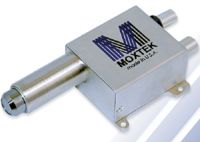
Mercury analyzer
The Hydra IIAA cold vapor atomic absorption mercury analyzer from Teledyne Leeman Labs is designed to provide high performance and enable increased productivity. According to the company, the analyzer has a 1-ppt detection limit, a 1-min/sample throughput rate, and a 270-position autosampler. The instrument reportedly can be configured for direct solids analysis as well as liquids analysis for sample matrices such as environmental, biological, foods, and petrochemicals.
Teledyne Leeman Labs, Hudson, NH;
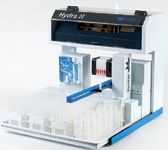
Raman microscope
The μSense-I Raman microscope from Enwave is designed for nonconfocal microscopic Raman applications in academic, industrial, and research laboratories. The microscope reportedly provides a spectral resolution of –6 cm–1, a spectral range of ~250–2350 nm, and spatial resolution of better than 5 μm. The instrument's Raman unit can be detached from the microscope and used as a portable instrument.
Enwave Optronics, Inc., Irvine, CA;

Elemental and depth profile analyzer
The GD-Profiler 2 instrument from HORIBA Scientific couples a flexible RF glow discharge excitation source to optics for elemental bulk, surface, and depth-profile analysis. The system, which is designed for surface and interface characterization, uses controlled sputtering of a material by a 4-mm diameter plasma and analyzes all elements including gases (N, O, H, Cl) as a function of the depth in conductive or nonconductive layers and substrates. According to the company, depth resolution can be as high as 1 nm, with a sputtering rate as fast as several micrometers per minute.
HORIBA Scientific, Edison, NJ;

ICP accessory
The Niagara PLUS accessory is designed to double the productivity of an ICP-OES or ICP-MS instrument. The accessory reportedly eliminates most of the sample cycle overhead required for accurate analysis by combining a switching valve and flow injection feature. According to the company, the accessory reduces sample contact with consumables.
Glass Expansion, Inc., Pocasset, MA;
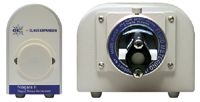
FT-IR spectrometer
PerkinElmer's Spectrum 65 FT-IR spectrometer is based on the company's Dynascan interferometer. According to the company, the instrument is designed for the everyday IR analyst.
PerkinElmer, Inc., Shelton, CT;

ATR accessory
The GladiATR Vision attenuated total reflection device is designed to couple small-area infrared analysis with simultaneous viewing. According to the company, the device's diamond crystal enables analysis of thick or nontransparent samples. The accessory reportedly is compatible with most FT-IR spectrometers.
Pike Technologies, Madison, WI;

Fluorescence spectrophotometer
The model F-2700 fluorescence spectrophotometer from Hitachi High Technologies America is available in standalone and PC-controlled configurations. The instrument reportedly features a signal-to-noise ratio of 800 rms for the Raman band of water at a 5-nm bandwidth. According to the company, with PC control the scan speed is as high as 12,000 nm/min, which makes the spectrophotometer useful for 3-D scan measurements. Accessories available for the instrument include automatic sampling, quantum yield measurement, spectral correction, and a 100-μL microcell.
Hitachi High Technologies America, Inc., Pleasanton, CA;
www.hitachi-hta.com/spectroscopy
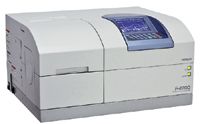
FT-NIR analyzer
ABB's MB3600-PH FT-NIR analyzer is designed for QA–QC, research and development, raw materials identification and qualification, NIR method development, and at-line PAT applications. According to the company, the benchtop analyzer can be fitted with various accessories for measurements in pharmaceutical and life science applications.
ABB, Quebec, Canada;

Imaging spectrograph and scanning monochromator
The SureSpectrum imaging spectrograph and scanning monochromator from Bruker Optics features a triple grating turret, standard motorized slits, and dual exit ports. The instrument is available in 250-mm and 500-mm focal lengths.
Bruker Optics, Inc., Billerica, MA;
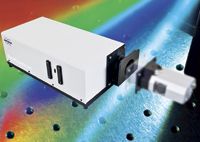
Fiber-optic vacuum feedthrough
Fiberguide Industries' fiber-optic vacuum feedthroughs are available in unlimited cell, flange, and port designs. The feedthroughs reportedly can be used at temperatures as high as 175 °C (250 °C for pigtail) using the company's gold-coated fiber. Fiber selection includes Multimode, Single Mode, and Polarization Maintaining with core diameters ranging from 50–1500 μm and connector interface selections of SMA (standard), ST, FC, and ferrule style. According to the company, the fibers are helium leak-tested and certified to 10–7 torr.
Fiberguide Industries, Stirling, NJ;
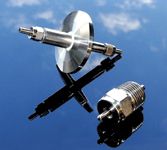
Air-jet sieve
The AS 200 Jet air-jet sieve is designed for separating light, fine particle sizes. The sieve is intended for use with 203-mm (8-in.) diameter sieves as small as 10 μm (~1200 mesh). According to the company, an industrial vacuum generates a jet of air that evenly disperses the particles via a slotted nozzle. The material that passes through the sieve is either discarded through the vacuum or collected in an attached cyclone. The procedure reportedly requires 2–3 min.
Retsch, Inc., Newtown, PA;
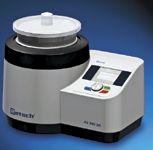
Custom standards
Custom inorganic standards from Inorganic Ventures can be used in applications such as ICP, ICP-MS, atomic absorption, and ion chromatography. Each standard is supplied with a certificate of analysis that details NIST traceability, certified values, and trace impurities. The standards reportedly are manufactured in a "green" manufacturing facility.
Inorganic Ventures, Lakewood, NJ;
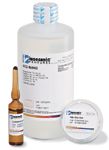
Silicon drift detectors
The XR-100SDD and X-123 SDD silicon drift detectors from Amptek are designed for X-ray fluorescence applications ranging from OEM handheld instruments to bench-top analyzers. According to the company, the silicon drift detectors enable extremely high count rate applications and require no liquid nitrogen. The detectors reportedly are housed inside the same TO-8 package as the company's other detectors.
Amptek, Inc., Bedford, MA;

XRF inorganic elemental analyzer
EDAX's Orbis micro-XRF inorganic elemental analyzer is designed to perform nondestructive measurements that require minimal sample preparation and provide improved sensitivity over SEM and EDS methods. The analyzer includes a motorized turret for coaxial sample view and X-ray analysis. Primary beam filters can be used with X-ray optics for micrometer to millimeter spot elemental analyses. Applications include forensics, materials analysis, failure analysis, and elemental imaging.
EDAX Inc., Mahwah, NJ;
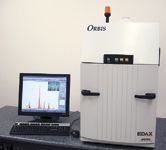
DPSS laser
Cobolt's Zouk CW DPSS laser is designed for UV-range applications. The 355-nm laser reportedly has an output power of 10 mW and a TEM00 beam. According to the company, the laser is an alternative to the Ar/Kr-ion UV lines, quasi-CW UV lasers, and diode lasers for applications such as fluorescence-based bioanalysis, semiconductor inspection, Raman spectroscopy, and microlithography.
Cobolt AB, Stockholm, Sweden;

Confocal mapping FLIM system
The DynaMac fluorescence lifetime imaging microscopy system from HORIBA Scientific is a confocal mapping system designed to provide information about molecular motion, sizes, local environment, interaction, and binding with respect to microscopic locations in a sample. The standalone system reportedly includes software control of light source, camera, pinholes, and filters.
HORIBA Scientific, Edison, NJ;
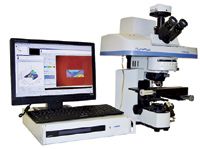

Getting accurate IR spectra on monolayer of molecules
April 18th 2024Creating uniform and repeatable monolayers is incredibly important for both scientific pursuits as well as the manufacturing of products in semiconductor, biotechnology, and. other industries. However, measuring monolayers and functionalized surfaces directly is. difficult, and many rely on a variety of characterization techniques that when used together can provide some degree of confidence. By combining non-contact atomic force microscopy (AFM) and IR spectroscopy, IR PiFM provides sensitive and accurate analysis of sub-monolayer of molecules without the concern of tip-sample cross contamination. Dr. Sung Park, Molecular Vista, joined Spectroscopy to provide insights on how IR PiFM can acquire IR signature of monolayer films due to its unique implementation.
Deep Level Transient Spectroscopy Reveals Influence of Defects on 2D Semiconductor Devices
April 25th 2024A recent study used deep level transient spectroscopy to investigate the electrical response of defect filling and emission in monolayer metal-organic chemical vapor deposition (MOCVD)-grown materials deposited on complementary metal-oxide-semiconductor (CMOS)-compatible substrates.